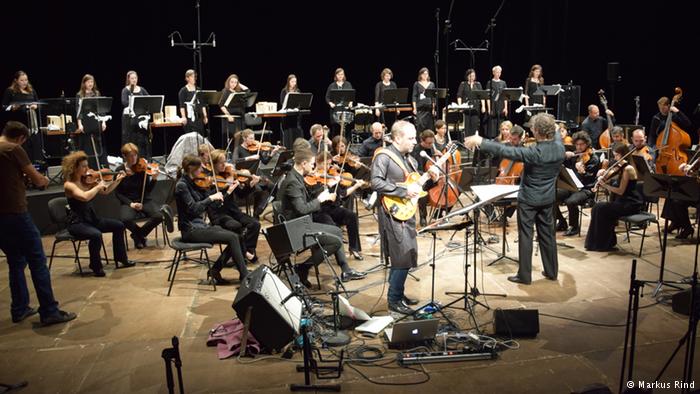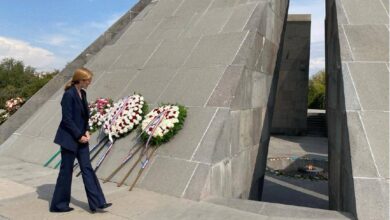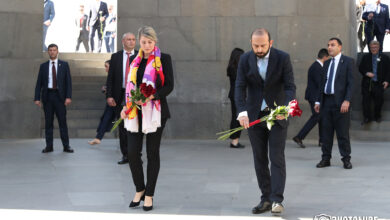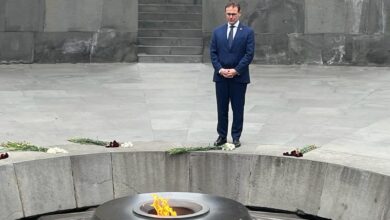Dresden Symphony recalls Armenian genocide

Recalling the genocide on Armenians perpetrated by the Osmanian Empire a century ago, an orchestra of German, Turkish and Armenian musicians is performing world premieres in Berlin, Deutsche Welle reports.
The mass execution of Armenians in 1915 is considered the 20th century’s first systematic extermination of an ethnicity, with massacres and death marches resulting in the death of approximately 1.5 million persons.
As a sign of reconciliation, the Dresden Symphony Orchestra launched a project titled “Aghet.” Deriving from the Turkish word “ağıt,” the word translates as “catastrophe” and is synonymous of the century-old genocide. The playbill for the concerts on November 27 and 28 at the “Radialsystem V,” a venue in Berlin’s Friedrichshain district, includes works by Zeynep Gedizlioğlu (Turkey), Vache Sharafyan (Armenia) und Helmut Oehring (Germany).
Guitarist’s initiative
Conducted by Andrea Molino, the Dresden Symphony is joined by musicians from Turkey and Armenia as well as members of the “No Borders Orchestra.” The latter, consisting of instrumentalists from the former Yugoslav states, was formed after the civil wars in the region in the 1990s and is itself a reconciliation project.
“Aghet” was initiated by Marc Sinan together with the orchestra from Dresden. Sinan’s Armenian grandmother lost her parents in the events following the deportations that began on April 24, 1915. The guitarist of German, Armenian and Turkish heritage performs the solo part in Helmut Oehring’s piece “Massaker, hört ihr MASSAKER!” (Massacre, do you hear MASSACRE!) for guitar solo, voice, women’s chorus and strings.
On his compositional approach, Oehring writes: “The score is meant to depict a force field that transforms the injuries and devastation suffered into a new energy, a kind of emotional reserve for those who come afterwards.”
Also given its world premiere is “Isimsiz / Notes for the Silent One” for strings. This is not the first work written by the young Turkish composer Zeynep Gedizlioğlu on the subject; her string quartet titled “Susma” (Don’t Be Silent!) was dedicated to the Armenian journalist Hrant Dink, murdered by a Turkish nationalist in broad daylight in Istanbul, in January 2007. Gedizlioğlu, who had been nearby, heard the shot.
The duduk, or the ‘Armenian flute’
At the “Aghet” concert project, a work by the Armenian composer Vache Sharafian is given its first performance in Germany. In “Surgite Gloriae,” a double concerto for viola and duduk, Armenian duduk soloist Araik Bartikian and German violist Matthias Worm play solo. Known as the “Armenian flute,” the duduk is considered the country’s national instrument.
Sharafian, who lives as a music instructor in Yerevan, the Armenian capital, has attracted worldwide attention for his compositions, including works for the Silk Road Ensemble, a much-noted intercultural project by American cellist Yo-Yo Ma.
Following “Hasretim” and “Dede Korkut,” “Aghet” is the third and final installment in the Dresden Symphony Orchestra’s trilogy dealing with the history and culture of Anatolia and the Caucasus region.
Following the performances in Berlin, the concert will be repeated on April 29, 2016 in Dresden before going on tour to Belgrade, Yerevan and Istanbul later in the year. The latter performance is certain to spark controversy, as the genocide of Armenians is still denied in the official reading of history in Turkey.








